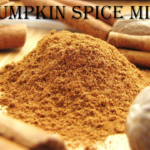
Home canned tomatoes keep their freshness so well, without that tinny or overly sharp aftertaste you sometimes find in store bought canned tomatoes. Although in a pinch the store bought will do, but if you have access to fresh sun ripened tomatoes, try canning your own. It is not as hard as many thing, and the finished product is amazing throughout the fall and winter when you can’t buy fresh.
Now I could go into the whole process of how mom and I can tomatoes, but if I were to leave out one step, I might be opening y’all up to a canning disaster. I wouldn’t want to let one of my dear friends on here end up with a batch of bad tomatoes, or the chance of eating something that would make y’all sick. So I am am going to share with you the instructions from the National Center for Home Food Preservation. Reading them through myself, it is basically exactly how mom and I have always canned. So it is a great source.
Before you can anything, Go to the National Center for Home Canning at: https://nchfp.uga.edu/publications/publications_usda.html
Always follow the guidelines set forth by the National Center for Home Canning at the above link. Do NOT just go by what I may say in my recipes or videos as it could be wrong and cause health issues. I try my best to make sure everything is followed correctly for your safety, but you need to protect yourself and always follow the National Center for Home Canning guidelines whenever you can food yourself.
For Crushed Tomatoes (with no added liquid)
A high-quality product, ideally suited for use in soups, stews, and casseroles.
Quantity: An average of 22 pounds is needed per canner load of 7 quarts; an average of 14 fresh pounds is needed per canner load of 9 pints. A bushel weighs 53 pounds and yields 17 to 20 quarts of crushed tomatoes-an average of 2¾ pounds per quart.
Procedure: Wash tomatoes and dip in boiling water for 30 to 60 seconds or until skins split. Then dip in cold water slip off skins, and remove cores. Trim off any bruised or discolored portions and quarter. Heat one-sixth of the quarters quickly in a large pot, crushing them with a wooden mallet or spoon as they are added to the pot. This will exude juice. Continue heating the tomatoes, stirring to prevent burning. Once the tomatoes are boiling, gradually add remaining quartered tomatoes, stirring constantly These remaining tomatoes do not need to be crushed. They will soften with heating and stirring. Continue until all tomatoes are added. Then boil gently 5 minutes. Add bottled lemon juice or citric acid to jars.
Acidification: To ensure safe acidity in whole, crushed, or juiced tomatoes, add two tablespoons of bottled lemon juice or 1/2 teaspoon of citric acid per quart of tomatoes. For pints, use one tablespoon bottled lemon juice or 1/4 teaspoon citric acid. Acid can be added directly to the jars before filling with product. Add sugar to offset acid taste, if desired. Four tablespoons of a 5 percent acidity vinegar per quart may be used instead of lemon juice or citric acid. However, vinegar may cause undesirable flavor changes.
Add 1 teaspoon of salt per quart to the jars, if desired. Fill jars immediately with hot tomatoes, leaving ½-inch headspace. Adjust lids and process. Recommended process times are given in Table 1,Table 2, and Table 3 below.
(Acidification is still required for the pressure canning options; follow all steps in the Procedures above for any of the processing options.)
Before you can anything, Go to the National Center for Home Canning at: https://nchfp.uga.edu/publications/publications_usda.html
Always follow the guidelines set forth by the National Center for Home Canning at the above link. Do NOT just go by what I may say in my recipes or videos as it could be wrong and cause health issues. I try my best to make sure everything is followed correctly for your safety, but you need to protect yourself and always follow the National Center for Home Canning guidelines whenever you can food yourself.
![]()
![]()











Be the first to comment